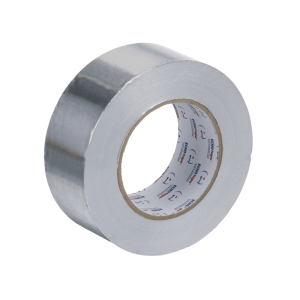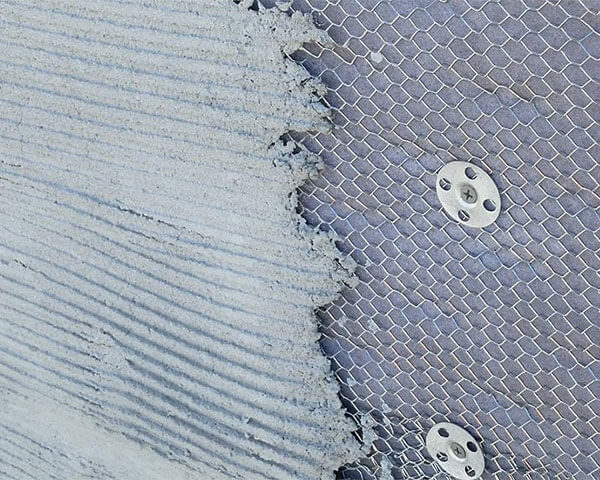As a surface material, stucco is renowned for its beauty and versatility. In fact, did you know that every building tradition in human history has used stucco in some way, shape, or form? The recipe—usually some combination of cement, lime, and fine sand—may have varied, but examples of stucco work occur in Roman architecture as early the 2nd Century AD, in Aztec architecture of Mexico and in 20th Century Mizner architecture of South Florida. Whether you are updating ceilings, walls, or stucco exterior, first choose the right type of stucco and then consider the benefits of contractor-grade stucco tape for your next high-performance building project.
Types of Stucco
Genuine stucco is made from a mixture of lime, sand, and water applied in layers and supported with wire lath. The process can vary depending on the geographical location of the work site, but it is a multi-step process impressive in its simplicity.
There are many types of stucco claddings, but they can best be split into three primary types: traditional three-coat stucco; newer one-coat stucco; and exterior insulating and finish systems (EIFS). Each can be a durable, protective cladding, but each requires a different set of installation details to achieve these results. Each can create an exterior air barrier, depending, again, on details at penetrations, transitions, and the edges of the wall cladding.
We discussed the benefits of three-coat vs. one coat stucco here, but to review:
Three-coat stucco is a longstanding, nonproprietary cladding system that has a scratch coat, then base, then finish coat, resulting in a 7/8-inch- to 1-inch-thick cladding. This system is the most time and labor intensive.
One-coat stucco systems have just one base coat about 1/2-inch thick with a thin finish coat, so these claddings are sometimes called “two-coat.” The base coat is a blend of portland cement, fibers, and proprietary additives, with each system carrying its own International Code Council (ICC) Evaluation Service (ES) report that dictates the installation details. There is less labor and time required for this system than three-coat stucco, but custom installation standards must be followed.
Exterior insulation and finish systems (EIFS) is different from the cement based stucco in the sense that it is lighter and more flexible. It is at time referred to as synthetic covering because of the concepts it uses. Just like the cement based covering, it is made up of three layers. The first layer is the insulation board which is either glued to the wall or attached to it mechanically. The second layer is a base coat and the third layer is the finishing and it might have some color. EIFS can be up to 4 inches thick, giving it many energy advantages over conventional stucco.
Why Stucco? Six Benefits of Stucco
As one of the most popular exterior finishes for homes and businesses, there are many benefits associated with stucco, including:
- It is fire resistant; because its components are fire-retardant, it makes stucco noncombustible
- It is durable – while it is not easy to damage, it is easy to repair
- It is a natural insulator – it helps maintain your home’s interior temperature
- Stucco can be colored for a finish more durable than paint
- In most climates, Stucco outlasts wood and vinyl, and it has even proven to be more durable than brick. You’re looking at an exterior with a lifetime of half a century!
- It is low maintenance. In comparison to other materials such as siding, stucco does not need to be repeatedly painted or reinstalled. This can help you to save an ample amount of money in regards to home improvements. Plus, you won’t have to worry about the upkeep of this particular finish.
Is Stucco Waterproof?
Generally speak, the answer is no. Indeed, no siding is 100% waterproof. The fact that stucco is usually a continuous surface means that any water that does get in has a hard time getting back out. This isn’t to say that stucco is a bad choice for siding; it is just very important to get flashing details right, to choose the right sheathing, and to provide an air gap for drainage.
Once you accept that the stucco itself lets water through, it’s easy to understand why the building envelope must be made watertight before the stucco is applied. Building codes require that stucco installations use a minimum of two layers of water-resistive barrier material beneath the lath to protect the sheathing. That way water driven into the permeable stucco surface dries to the outside.
Building scientist Joseph Lstiburek makes a number of recommendations to circumvent the problems in his article “The Perfect Storm Over Stucco.” Further information on this issue, including recommendations for stucco installation details, can be found in the article, To Install Stucco Right, Include an Air Gap.
[echo_cta]
How to Choose the Right Tape for Stucco
Stucco work is demanding, requiring tapes designed specifically to survive the weight of plaster; adhere to multiple surfaces, not just concrete and wood; withstand the heavy scraping associated with stucco work; remove cleanly when the job is done. Plus, it needs to stand up to a multitude of elements, sometimes severe temperatures and bond appropriately to a variety of surfaces.
As designers and manufacturers of contractor-quality adhesive tapes, we take the guesswork out of this decision by offering only those tapes which support the most robust requirements. That said, here are four questions to ask before choosing the right stucco tape for the job:
- What type of host surface will be masked? Surfaces, Delicate, and/or Smooth, Hard-to-Stick To? It is always best to test adhesion to host surfaces prior to application, if possible. A high visibility color will ensure that the tape is not accidentally left on the surface after the project is completed. Additionally, an abrasion-resistant backing will protect the host surface, and a high tensile backing will prevent breaking from tough coatings during pull-through for clean removal.
- What amount of adhesion level is needed? Low, Medium, High, or Extreme? Even a smooth surface can present a challenge; for example, consider polyethylene sheeting. A high shear adhesive property to hold/seam is required. Make sure you select a product with enough tenacious rubber adhesive to grab and adhere to both smooth and rough irregular surfaces. A water-tight seal is assured by the right amount of adhesive for each step in the stucco process.
- How long will the tape be expected to adhere to the host surface? Days, Weeks, Months? A premium adhesive tape coated with a UV resistant backing can provide the defense needed for as long as 60 days to ensure clean removal with no residue left behind.
- What about environmental facts? Inspection? Disposal? To help prevent product spoilage, store the masking media in its original containers between 40°F and 90°F (5°C to 32°C). No liner tape construction makes clean-up swift and easy. Unless used for remediation purposes, no special disposal procedures are necessary.
Choosing the right product will go much smoother when you consider these potential challenges. For example, our All-Purpose Stucco Tape is a heavy-duty, high tack polyethylene tape, great for stucco masking, general repairs, and temporary mounting. With excellent low-temperature bonding, residue-free removal from most surfaces, and no curl, it’s a great duct tape alternative.
Ideal for one coat stucco, our Premium Grade One Coat Stucco Tape is engineered with a high-performance rubber adhesive designed to provide superior holding power and limit residue when removed within a 7-day period.
And although best-rated for three-coat stucco applications, contractors have told us they use ECHOtape’s Premium Grade Stucco Cloth Tape for all types of outdoor construction and even marine projects. It holds strong under extreme weather conditions but removes cleanly without any adhesive residue within a 60-period.
Patching and Replacing Stucco with Stucco Tape — A Field Test
Don’t take our word for it! While we are confident that our tapes are the best on the market, it’s always great to see our tapes in action. So we sent stucco and plastering contractor Kirk Giordano of Giordano Plastering, Inc. a box of our stucco tape. See what he had to say on a video entitled “ECHOtape – The Best Tape for Windows and Door Frames“.
We believe in the roll of tape in every toolbox philosophy, especially when working outdoors masking stucco, plaster, and concrete applications. For reliable adhesions that provides residue-free removal 7 days, 30 days or even up to 60 days later, consider ECHOtape’s premium stucco tape solutions.





